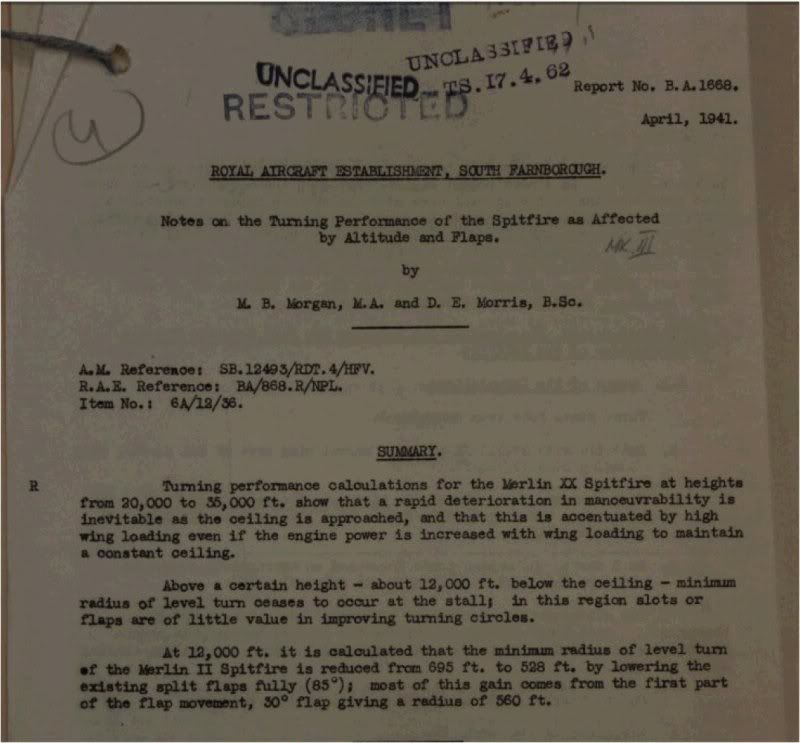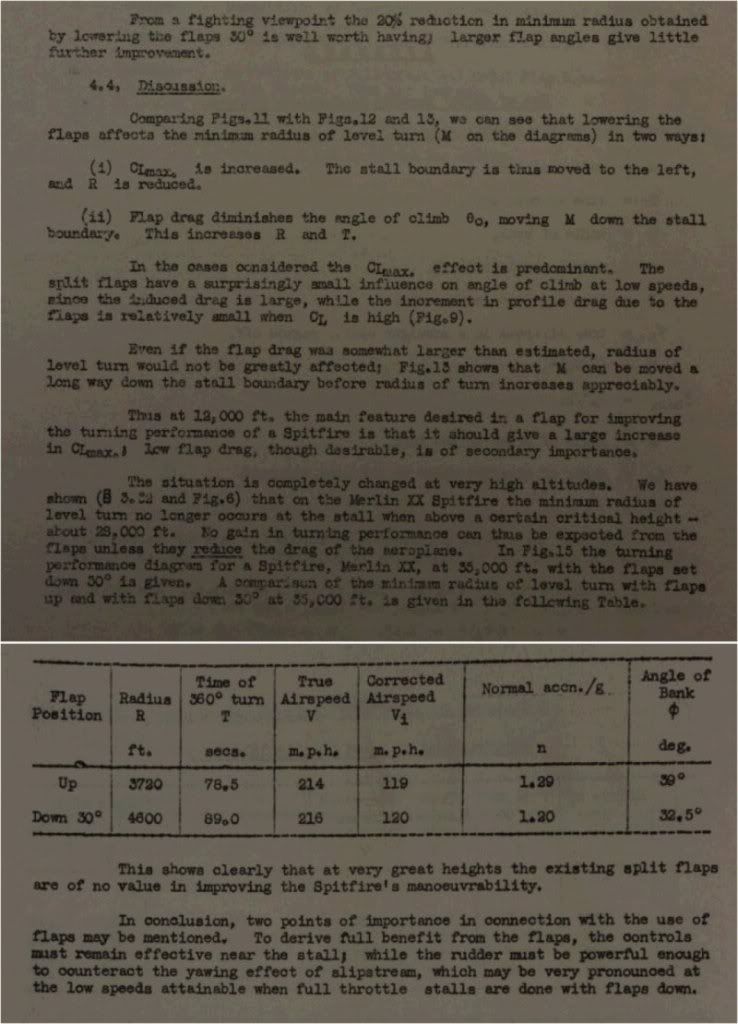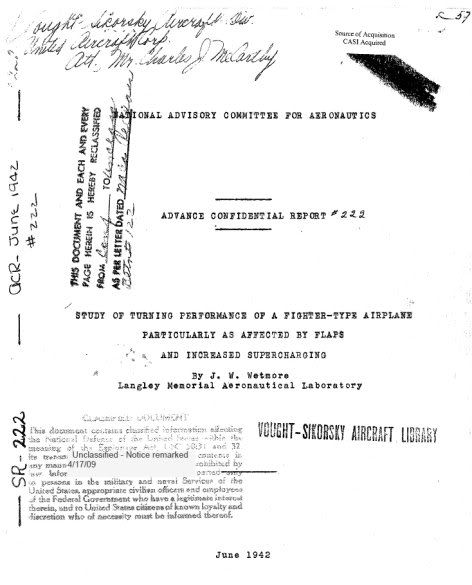
 |
|
#171
|
||||
|
||||
|
Quote:
Quote:

|
|
#172
|
|||
|
|||
|
the conclusion if you can really call it that is covered in the intro summary and the endpapers:
  Crumpp I presume you are referring to these NACA documents:   If so I have them. The RAE report is quoted as a source or reference in these NACA reports. In addition the first one also references the other RAE report "Notes on the dogfight" All three documents are imo in general agreement. The Devs should study these ! "Combat" flap usage in the classic IL2 imo was totally out of whack with reality ... sadly I am not so sure much has changed in CLOD. Last edited by IvanK; 05-31-2012 at 11:00 PM. |
|
#173
|
||||
|
||||
|
Quote:
They are of very limited use in maneuvering to the average pilot. I think the NACA conclusion in ACR #222 sum it up the best. In general flaps can offer some turn performance improvements beyond the clean configuration stall point but not above it. In order to realize that improvement, a pilot must be able to precisely deploy the exact amount of flap required at the optimum speed to achieve that benefit. IIRC, the example they use is 130 mph and 127mph.... That small speed difference with the right amount of flaps realizes a turn performance increase but the same amount of flaps at just 3 mph slower speed results in worse turn performance. |
|
#174
|
||||
|
||||
|
Additionally, that report is "pie in the sky".
The Spitfire had only two flap positions, fully retracted and fully extended. 0 degrees or 85 degrees...the pilot can make his choice!! |
|
#175
|
||||
|
||||
|
Ivan, would you be willing to provide a download link to those two reports, or else attach them to a PM?
Pretty please? |
|
#176
|
||||
|
||||
|
here...
|
|
#177
|
|||
|
|||
|
They do mention that specifically in the report.
|
|
#178
|
|||
|
|||
|
I presume the reason for the original RAE report was to decide whether manouevring flaps would be useful for existing designs and how they could be used in future. I doubt whether the original Spitfire flaps would have been strong enough to have been used at medium-high speeds, even if they had been adjustable. It is interesting to note that the Spitfire IV (later XII) Griffon engine prototype DP845 (first flight 27 November 1941) originally had reinforced slotted flaps with external guides, so possibly this alternative design was mooted as a result of the tests on the Spitfire III, which was very similar, apart from the engine.
|
|
#179
|
||||
|
||||
|
|
|
#180
|
||||
|
||||
|
Quote:

Last edited by Crumpp; 06-01-2012 at 02:14 PM. |
 |
|
|